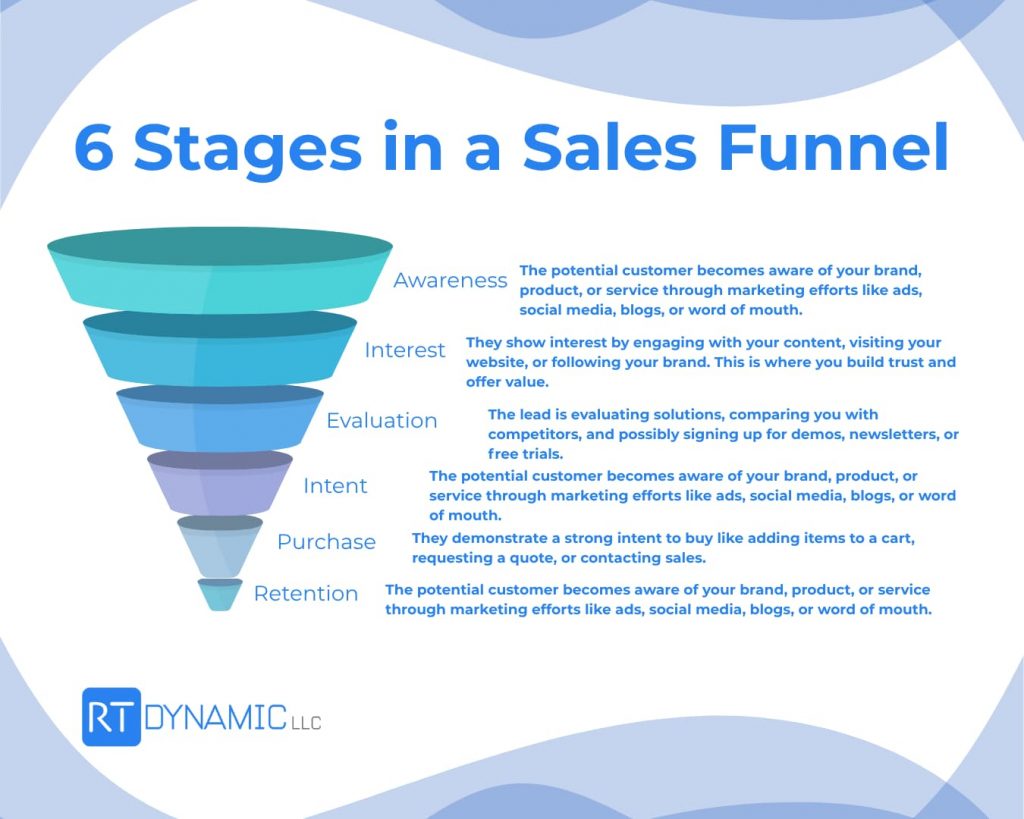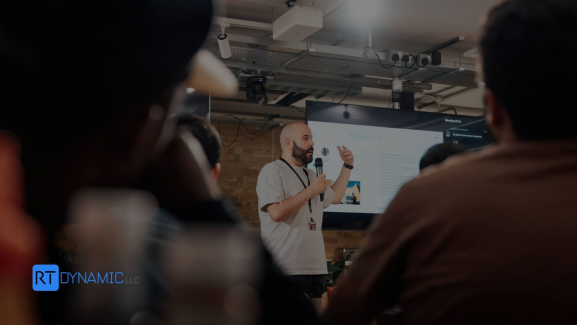What Is a Sales Funnel and Why It Matters
A sales funnel is the step-by-step journey that potential customers take before they buy from you. It starts when someone first hears about your product or service and ends when they make a purchase or even become repeat customers. Think of it as a roadmap that guides people from being strangers to becoming loyal buyers.
The funnel is made up of different stages, each with a specific goal. These stages help businesses understand what people are thinking, feeling, and doing at each point. When you know that, you can plan the right move to keep them interested and move them forward.
Without a well-structured funnel, leads often fall through the cracks. Your marketing may work, but without a clear path, those efforts don’t always lead to actual sales. That’s where Salesforce Optimization comes in - it helps you track, manage, and guide leads more effectively.
The real power of a sales funnel lies in how it improves visibility. It shows where people are getting stuck or dropping off so you can fix those issues. This leads to better conversion rates and a smoother buying experience.
Understanding the Stages of the Sales Funnel
Every effective funnel has clear stages, and understanding them is the first step toward Salesforce CRM optimization. These stages represent how people move from learning about your brand to becoming loyal customers. When each stage is mapped right, your sales process becomes smoother and smarter.
Below are the 6 key stages of a modern sales funnel:
- Awareness
This is where people first hear about your product or service. They might see an ad, a social post, or a search result. - Interest
Now they’re curious. They start exploring your website, reading blogs, or signing up for newsletters. - Evaluation
The lead compares you with others. They check features, pricing, and reviews to decide if you're a fit. - Intent
At this stage, they’re showing buying signals. Maybe they add something to their cart or request a quote.
Purchase
The deal is done - they’ve officially become your customer. But the funnel doesn’t end here. - Retention
Your focus now shifts to keeping them engaged. Repeat purchases, upsells, and loyalty matter here.

A good funnel adapts to your audience. Here's how B2B vs. B2C funnels differ:
| Funnel Stage | B2B Example | B2C Example |
| Awareness | LinkedIn ad targeting SaaS professionals | Instagram ad for skincare products |
| Interest | Downloading a whitepaper | Visiting the product page |
| Evaluation | Comparing software solutions with team input | Reading online reviews |
| Intent | Booking a demo or scheduling a sales call | Adding items to cart |
| Purchase | Signing a contract or subscription | Completing checkout |
| Retention | Ongoing account management and support | Loyalty programs or post-purchase emails |
Salesforce CRM optimization helps you manage these stages with precision especially when your audience is complex.
Why Salesforce Is Key to Funnel Optimization
Salesforce brings all your sales and marketing tools together in one place. Instead of jumping between platforms, your teams can work from a single dashboard. That means less confusion and more action.
One of the biggest challenges in any funnel is misalignment between sales and marketing. When teams don’t share data, leads fall through the cracks. Salesforce solves this by syncing contact details, activity history, and lead status in real time.
If you're wondering how to optimize Salesforce CRM, start by connecting your funnel stages to Salesforce tools. Use lead scoring, automated workflows, and shared dashboards to keep everyone in the loop. That way, your sales team knows exactly when and how to follow up.
With Salesforce, every touchpoint is tracked so no lead gets lost, and no effort is wasted. It's not just a CRM. It's your funnel's control center.
Using Salesforce CRM to Track Leads Efficiently
Lead tracking is where Salesforce CRM optimization really shines. From the moment a lead enters your funnel, Salesforce starts recording every move. You get a full view of their journey, all in one place.
Salesforce captures leads from forms, ads, emails, and other sources automatically. Once they’re in, you can segment them by industry, behavior, or engagement level. This helps you send the right message to the right people.
With lead scoring, Salesforce highlights the hottest prospects. High scores? Your sales team jumps in. Lower scores? Let marketing keep nurturing.
Thanks to automation, assigning leads is effortless. You can route them based on region, interest, or rep availability. Follow-ups get scheduled without manual effort, so your team never misses a beat.
That’s Salesforce CRM optimization in action: less guesswork, more conversions.

Automating Sales Tasks with Salesforce Tools
Manual work slows down your funnel. With Salesforce workflow automation, you can take busywork off your team's plate. That means more time selling and less time managing tasks.
Salesforce Workflow Rules help you trigger actions like sending emails or updating records automatically. For more complex tasks, Process Builder and Flow let you build custom logic without code. You can automate approvals, alerts, and lead handoffs in just a few clicks.
Need to follow up with leads? Set up email sequences and reminders that go out on time, every time. You can even automate lead rotation so every sales rep gets a fair share of opportunities.
With smart automation, your funnel moves faster and your team stays focused on closing deals. That’s the real power of Salesforce workflow automation.
Improving Lead Nurturing Through Salesforce Insights
Good lead nurturing means knowing what your leads care about—and when they care about it. Salesforce gives you that insight with tools like Engagement History and behavior tracking. You can see who opened your emails, clicked your links, or visited key pages.
With this data, nurturing stops being a guessing game. You can personalize follow-ups based on real actions, not just gut feelings. Salesforce CRM optimization turns raw activity into smarter, faster decisions.
Want to go a step further? Let Einstein AI do the work. It predicts which leads are most likely to convert and suggests the best next steps. Combine that with dynamic content personalization, and every lead feels like your top priority.

Analyzing Funnel Performance with Salesforce Dashboards
You can’t improve what you can’t see. That’s where Salesforce dashboards come in. They give you a visual snapshot of how your funnel is performing at every stage.
With Salesforce data optimization, you can build custom dashboards tailored to your sales process. Each stage - from Awareness to Retention - can have its own set of metrics. You’ll spot bottlenecks, gaps, and opportunities in seconds.
Track key numbers like drop-offs, conversion rates, and sales cycle time that too all in real time. These insights help you react faster and make smarter decisions. It’s data with purpose, not just numbers on a screen.
This is the foundation of true Salesforce data optimization: seeing exactly what’s working, and what needs fixing.
Best Practices for Continuous Funnel Improvement
Your funnel isn’t a one-time setup but needs ongoing care. Here’s how to keep it sharp using Salesforce:
- A/B Testing Within Salesforce: Test different email subject lines, CTAs, or workflows to see what performs best. Use built-in tools or integrate with testing platforms to experiment confidently.
- Regular Data Hygiene and Deduplication: Clean data is key for Salesforce CRM optimization. Schedule routine cleanups to remove duplicates, update outdated info, and keep your lead lists accurate.
- Involve Sales & Marketing in Feedback Loops: Use shared dashboards and reports to bring both teams together. Regular check-ins help spot gaps, align goals, and adjust tactics as needed.
Small improvements, made consistently, turn a good funnel into a high-converting machine.

Real-World Example: Salesforce Funnel Optimization in Action
Client Background: A B2B Tech Company with Lead Drop-Off Issues
One of RT Dynamic’s B2B clients was struggling with poor lead follow-up and inconsistent sales outreach. They used Salesforce, but lacked proper funnel visibility and automation. Most leads dropped off after the initial inquiry stage.
The Optimization Approach
We restructured their Salesforce CRM to match their actual sales funnel. Lead scoring was introduced, and Salesforce workflow automation handled email sequences and task reminders. Custom dashboards were built to track stage-wise conversions.
Results After Optimization
- Lead response time improved by 60%
- Sales-qualified leads (SQLs) increased by 35%
- Funnel drop-off rate at the evaluation stage decreased by 40%
- Sales cycle time was shortened by over a week
With proper Salesforce data optimization, their funnel went from reactive to results-driven. The transformation was visible within just one quarter.
FAQs About Salesforce Funnel Optimization
Q1: What is Salesforce Optimization and why is it important?
Salesforce optimization means improving how you use Salesforce to boost efficiency, automation, and results. It helps streamline lead management, align teams, and turn more leads into customers. Without it, businesses often waste time, miss deals, or lose leads in the funnel.
Q2: How do I track lead stages effectively in Salesforce?
Use custom fields and pipeline stages to mirror your sales funnel inside Salesforce CRM. Combine this with dashboards and reports to monitor lead movement across each stage. This helps sales reps stay organized and focused on high-potential leads.
Q3: Which Salesforce tools help automate sales tasks?
Tools like Workflow Rules, Process Builder, and Flow automate emails, task assignments, and follow-ups. These features reduce manual work, speed up response times, and ensure leads don’t fall through the cracks.
Q4: How can I improve CRM data quality in Salesforce?
Schedule regular data audits, remove duplicates, and set up validation rules. Good data fuels better decisions, smarter automation, and accurate funnel reporting. Use Salesforce data optimization techniques to maintain accuracy over time.
Q5: Can Salesforce dashboards really show funnel performance clearly?
Yes, Salesforce dashboards give a real-time, visual view of every funnel stage. You can track drop-offs, conversion rates, and cycle lengths. This helps teams quickly identify what’s working and what’s not.
Q6: What are common mistakes in Salesforce CRM optimization?
Overcomplicating workflows, ignoring automation, and neglecting data hygiene are key issues. Many also fail to align marketing and sales teams, which weakens funnel performance. Focus on clarity, simplicity, and regular review to avoid these pitfalls.

Final Thoughts: Is Your Sales Funnel Salesforce-Ready?
A strong sales funnel isn’t just about having stages but knowing what happens at each one. With Salesforce CRM optimization, you can track, automate, and improve every step of the journey. From capturing leads to closing deals and keeping customers, Salesforce brings it all together.
You’ve seen how Salesforce workflow automation, data tracking, and smart insights sharpen your funnel. Now the question is: are you using it to its full potential?
If you're unsure where to start, we’re here to help. Talk to our Salesforce experts at RT Dynamic to book a free consultation or a full funnel audit. We’ll help you unlock the real power of Salesforce for every stage of your growth.



